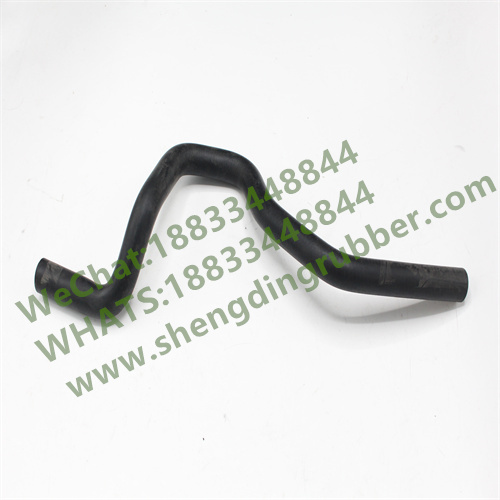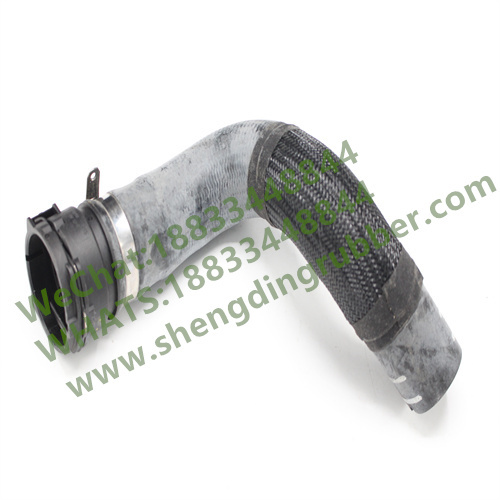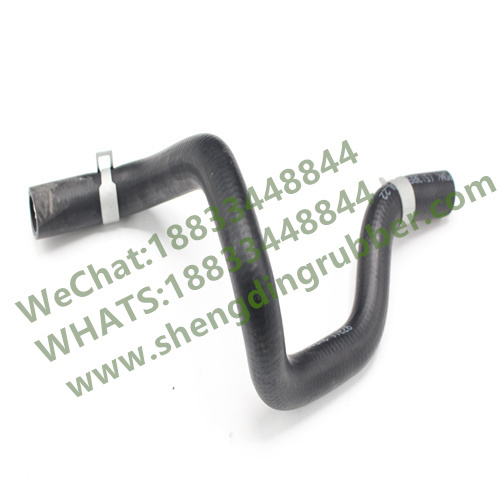How to Choose the Right Rubber Hose for Automotive Applications: A Comprehensive Guide
Release Time:
Aug 04,2025
How to Choose the Right Rubber Hose for Automotive Applications Table of Contents 1. Understanding the Importance of Rubber Hoses in Automotive Systems 2. Types of Rubber Hoses Used in Automotive Applications 3. Key Factors to Consider When Choosing a Rubber Hose 3.1. Temperature Resistance 3.2. Pressure Ratings and Durability 3.3. Chemical Compatibility 3.4. Size and Fitting Requi
How to Choose the Right Rubber Hose for Automotive Applications
Table of Contents
1. Understanding the Importance of Rubber Hoses in Automotive Systems
2. Types of Rubber Hoses Used in Automotive Applications
3. Key Factors to Consider When Choosing a Rubber Hose
3.1. Temperature Resistance
3.2. Pressure Ratings and Durability
3.3. Chemical Compatibility
3.4. Size and Fitting Requirements
4. Common Applications of Rubber Hoses in Vehicles
5. Tips for Installing and Maintaining Rubber Hoses
6. Troubleshooting Common Rubber Hose Issues
7. Frequently Asked Questions (FAQs)
8. Conclusion
1. Understanding the Importance of Rubber Hoses in Automotive Systems
Rubber hoses are essential components in various automotive systems, serving critical roles in fluid transportation, ventilation, and airflow management. From the engine to the cooling system, these hoses ensure that fluids flow efficiently to keep your vehicle running smoothly. Understanding their importance can help you make informed decisions when selecting the right rubber hose for your automotive applications.
2. Types of Rubber Hoses Used in Automotive Applications
A variety of rubber hoses cater to different automotive needs. Here are some common types:
2.1. Radiator Hoses
These hoses connect the engine to the radiator, facilitating coolant flow to regulate temperature. It's crucial to select hoses that can withstand high temperatures and pressures.
2.2. Heater Hoses
Heater hoses transport hot coolant from the engine to the heater core, allowing for cabin heating. They should be resistant to heat and flexible for easy installation.
2.3. Fuel Hoses
Fuel hoses carry gasoline or diesel from the tank to the engine. These hoses must be compatible with fuel types and resistant to deterioration from hydrocarbons.
2.4. Brake Hoses
Brake hoses transfer brake fluid from the master cylinder to the brake components. They require high durability and pressure resistance to ensure safety.
3. Key Factors to Consider When Choosing a Rubber Hose
Selecting the right rubber hose involves several critical factors that directly impact performance and longevity.
3.1. Temperature Resistance
Different automotive applications operate at varying temperature ranges. Choose a rubber hose designed to withstand the specific temperatures your vehicle generates to prevent premature failure.
3.2. Pressure Ratings and Durability
Consider the pressure ratings associated with the application. Ensure the rubber hose can handle the maximum pressure of the system to prevent leaks or bursts.
3.3. Chemical Compatibility
Automotive fluids can contain various chemicals that may degrade rubber hoses over time. Assess the chemical composition of the fluids the hose will encounter and select a rubber type that is compatible.
3.4. Size and Fitting Requirements
Ensure that the hose's diameter and fittings match the specifications of your vehicle's system. Using the wrong size can lead to leaks or poor performance.
4. Common Applications of Rubber Hoses in Vehicles
Rubber hoses are used in various automotive applications, including:
- **Cooling Systems**: Radiator and heater hoses are vital for engine cooling.
- **Fuel Systems**: Fuel hoses transport fuel efficiently from the tank to the engine.
- **Brake Systems**: Brake hoses ensure safe and effective braking performance.
- **Air Intake**: Hoses facilitate air intake, enhancing engine performance.
5. Tips for Installing and Maintaining Rubber Hoses
Proper installation and maintenance of rubber hoses can extend their life and prevent issues. Here are some tips:
- **Inspect Regularly**: Check hoses for cracks, bulges, or leaks regularly.
- **Use Hose Clamps**: Secure hoses with the appropriate clamps to prevent disconnections.
- **Avoid Overbending**: Take care not to bend rubber hoses too sharply during installation, as this can cause stress points.
- **Replace as Needed**: If you notice any signs of wear, replace hoses promptly to avoid system failures.
6. Troubleshooting Common Rubber Hose Issues
Identifying and resolving rubber hose issues early can prevent more significant problems. Here are common issues and their solutions:
- **Leaking Hoses**: Check for loose fittings or cracks. Tighten clamps or replace the hose if necessary.
- **Squealing Noises**: This may indicate a worn or loose hose. Inspect and replace if required.
- **Overheating**: Overheating may signal a clogged hose or a failure in the cooling system. Inspect the hose and system for blockages.
7. Frequently Asked Questions (FAQs)
7.1. How do I know when to replace my rubber hoses?
Check for visible signs of wear, such as cracks, bulges, or leaks. If you notice any deterioration, it’s best to replace the hose immediately.
7.2. Can I use any type of rubber hose for my vehicle?
No, it's essential to use hoses specifically designed for the application to ensure compatibility and safety.
7.3. What is the average lifespan of rubber hoses?
Rubber hoses typically last between 4 to 6 years, but this can vary based on vehicle use and environmental conditions.
7.4. Are silicone hoses a better option than rubber hoses?
Silicone hoses offer better temperature resistance and flexibility, making them suitable for high-performance applications. However, they may not be necessary for standard vehicles.
7.5. How can I clean rubber hoses?
Use a mild detergent and warm water to clean rubber hoses. Avoid harsh chemicals that can degrade the material.
8. Conclusion
Choosing the right rubber hose for automotive applications is crucial for ensuring your vehicle operates efficiently and safely. By understanding the different types of hoses, key factors for selection, and maintenance practices, you can make informed decisions that enhance your vehicle's performance. Always prioritize quality and compatibility when selecting rubber hoses to achieve optimal results in your automotive systems.
Key words:
What Else Might You Learn?







